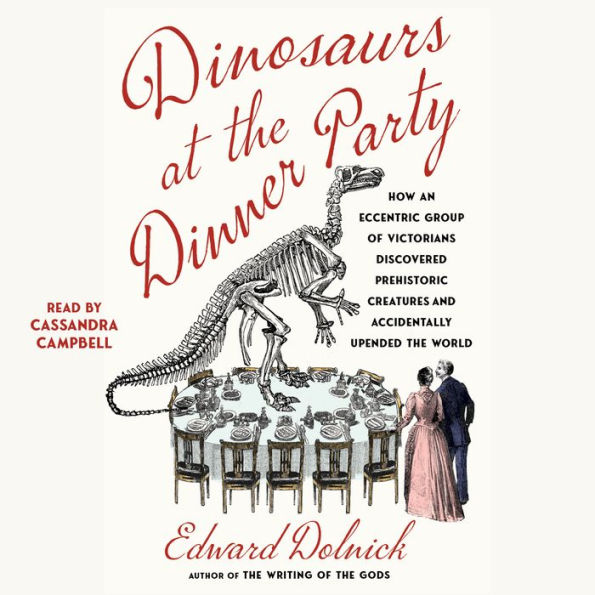A masterful and enormously entertaining book. . . . [Makes] history come vibrantly alive." —Booklist
“[An] exuberant tale . . . intriguing . . . a delightful, engrossing confluence of Victorian science and history.” —Kirkus Reviews
"With wit, warmth, and humor, Edward Dolnick immerses us in one of the most exhilarating times in the history of science: when a motley crew of professors, naturalists, preachers, and bone hunters discovered the existence of dinosaurs. Written like an adventure novel but fashioned with historical rigor, Dinosaurs at the Dinner Party is a gripping story of how we came to understand that the Earth was old and once populated by ancient beasts." —Steve Brusatte, professor and paleontologist at the University of Edinburgh and New York Times bestselling author of The Rise and Fall of the Dinosaurs
"What a brilliant read. Dolnick elegantly sketches out the long-ago lives of the fossil hunters and Deep Time detectives whose labors will fuel scientific inquiry and the human imagination for as long as humanity manages to last. Dolnick's enthusiasm and respect for his evocative subject shows on every page. He leaves readers both marveling at the known history of life on Earth and perhaps pondering their own place within it. I admired every bit of this book." —Paige Williams, New Yorker staff writer and author of The Dinosaur Artist
“As Edward Dolnick reminds us in this treat of a book, the legacy of the dinosaurs is more than the bones exhumed from the rock. Dinosaurs and many other creatures in the fossil menagerie forced us to fundamentally rethink ourselves and our role in life's ever-unfolding story.” —Riley Black, author of The Last Days of the Dinosaurs and When the Earth Was Green
"Dolnick tells the tale of the first discoveries of dinosaurs and other extinct monsters, and the founding of the new science of geology, with enthusiasm and clarity. He shows how early peoples struggled to understand fossils, and then the shocking understanding 200 years ago that the Earth had once been populated by creatures unlike anything now living." —Michael J. Benton, author of Dinosaurs Rediscovered and Professor of Vertebrate Paleontology, University of Bristol
5
1

Dinosaurs at the Dinner Party: How an Eccentric Group of Victorians Discovered Prehistoric Creatures and Accidentally Upended the World

Dinosaurs at the Dinner Party: How an Eccentric Group of Victorians Discovered Prehistoric Creatures and Accidentally Upended the World
FREE
with a B&N Audiobooks Subscription
Or Pay
$24.99
24.99
Pre Order

Editorial Reviews
Product Details
| BN ID: | 2940160443720 |
|---|---|
| Publisher: | Simon & Schuster |
| Publication date: | 08/06/2024 |
| Edition description: | Unabridged |
From the B&N Reads Blog
